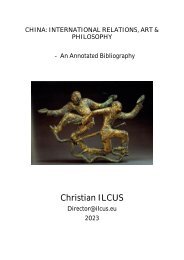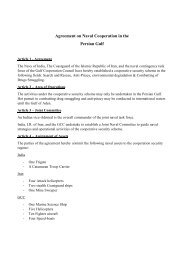prsentation kongelig akademi rev 7
Create successful ePaper yourself
Turn your PDF publications into a flip-book with our unique Google optimized e-Paper software.
Without an integrated theory-informed approach to urban development and architecture, there is no<br />
European urbanism to relate to. Mark Jayne and Kevin Ward suggest the elements around which a<br />
European city in New Kastrup could be harmonized: participation, materials, play, social utility,<br />
technology, sustainability, rhythm, mobility and mixed-use, learning and entrepreneurship,<br />
encounters and consumption, markets and waterfronts in a reproducible and comparative way. The<br />
value of the European City lies in the way it connects urbanization with urbanity, cultural policy<br />
with democracy, multicultural identity with local distinctiveness, and architecture with urban theory<br />
to create a contemporary European expression combined with a sense of innovative visual form. We<br />
must create something new and better in Europe.<br />
The aim is not only to excite Copenhageners and make them feel more European but also to<br />
contribute to the development of multicultural European theory-informed urbanism. Of course, I<br />
respect New Bauhaus' implicit desire to act as a support wheel for the political unification of<br />
Europe under the leadership of Paris-Brussels-Berlin. However, this is not the focus of my project.<br />
The autonomy of art is at stake. At the same time, the connections between architecture and human<br />
experience are not particularly well elucidated in the urban-theoretical literature. There are<br />
questions regarding the relationship between the political system, governance of the project, and<br />
funding.<br />
Copenhagen must be an actor in the fast-changing world of European urbanism, and help shape<br />
European capitalism with its own goals and values, which are now in the making stage. The city<br />
must communicate clearly and build relationships along this path through bridge-building and<br />
networking. I envision a European city that expresses an anthropocentric cosmic order, is functional<br />
and organic in its form as fungi that grow in and hold together the earth, as conceived by urban<br />
theorists, architects, and artists in happy symbiosis from all EU and candidate countries, and with<br />
leading forces to be defined. Strong leadership and good governance are necessary to lead change.<br />
The purpose of this is to express a certain idea of the European City. I see Fungi as signaling: (1)<br />
The earth that holds us together through an invisible network that we must cherish; (2) that we must<br />
be earthy in the sense of being down-to-earth, natural, or even open and direct about what others<br />
avoid, or are ashamed of; and (3) to stimulate a connection to the earth in Europe or to European<br />
soil, something that we have become distanced from in our society.<br />
But I cannot do it alone. I need your help.<br />
I am hoping for fruitful exchange and guidance from teachers and students in both directions.<br />
In a nutshell, I will explore the connections between politics and urban planning, architecture,<br />
sculpture, and painting within an appropriate urban theoretical framework.<br />
Overall, I think we need to prepare for rapid change in Europe. We must combine boldness with<br />
smoothness as part of a well-thought-out plan for the political unification of the EU. May les<br />
consciences keep up.<br />
What are your contributions?<br />
Christian Ilcus director@ilcus.eu<br />
P a g e 4 | 5








